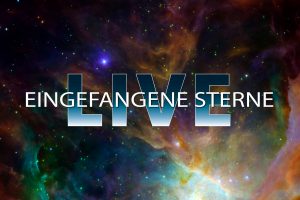Der Herbst beginnt
Am 22. des Monats verabschiedet sich mit der Tagundnachtgleiche der diesjährige Sommer astronomisch und kalendarisch, bei uns auf der Nordhalbkugel beginnt der Herbst. Von Jena aus gesehen quert die Sonne um 14:44 Uhr Sommerzeit den Himmelsäquator in Richtung Süden. Sie hat am 16. das Tierkreissternbild Löwe verlassen und ist vor die Jungfrau gezogen.
Vollmond ist am 18. September, Neumond am 3. Am 18. September erreicht eine partielle Mondfinsternis ihren Höhepunkt um 4 Uhr 44. Der Mond ist zu etwa 8,5 % vom Kernschatten der Erde bedeckt.
Im Südosten erscheint der Ringplanet Saturn vor dem Tierkreissternbild Wassermann. Er bewegt sich schon seit dem 30. Juni rückläufig vor den Fixsternen, also von Ost nach West. Am 8. September ist seine Oppositionsstellung zur Sonne.
Am Sternhimmel der ersten Nachthälfte vollzieht sich ebenfalls der Wechsel der Jahreszeiten. Noch dominiert im Südwesten das prachtvolle Sommerdreieck, das die hellen Sterne Deneb im Schwan, Wega in der Leier und Atair im Adler bilden.
Aber aus dem Osten ziehen bereits die leider nicht so lichtstarken Sterne des Herbstvierecks auf, die gegen Monatsende den mitternächtlichen Sternhimmel beherrschen werden. Sie gehören zu den Sternbildern Pegasus und Andromeda. Dieses Viereck ist ein nahezu perfektes Rechteck und so leicht zu entdecken. Die obere Kante führt als Sternkette der Andromeda in den Osten, hin zum Helden Perseus. Darüber funkelt als Himmels-W das Sternbild Kassiopeia. Später erscheinen im Osten bereits die Sterne des Wintersechsecks: Kapella, Aldebaran, Rigel, Sirius, Prokyon sowie Kastor und Pollux.
Der rote Nachbarplanet Mars hat am 15. August den hellen Riesenplaneten Jupiter vor dem Tierkreissternbild Stier überholt und befindet sich ab 5. September vor dem Tierkreissternbild Zwillinge.
Vom 1. bis 15. September ist der sonnennahe Planet Merkur im Osten knapp über dem Horizont in der Morgendämmerung zu sehen.
W. Don Eck
Zeiss-Planetarium Jena
The starry sky in September 2024
Autumn begins
On the 22nd of the month, this year’s summer astronomically and calendrically comes to an end with the equinox and autumn begins here in the northern hemisphere. Seen from Jena, the sun crosses the celestial equator towards the south at 14:44 summer time. It left the zodiacal constellation of Leo on the 16th and moved in front of Virgo.
Full moon is on 18 September, new moon on 3 September. On 18 September, a partial lunar eclipse reaches its peak at 4.44 a.m. The moon is about 8.5% covered by the Earth’s umbra.
In the south-east, the ringed planet Saturn appears in front of the zodiacal constellation Aquarius. It has been moving retrograde in front of the fixed stars since 30 June, i.e. from east to west. Its opposition to the sun is on 8 September.
The change of seasons is also taking place in the starry sky in the first half of the night. The south-west is still dominated by the magnificent summer triangle formed by the bright stars Deneb in the Swan, Vega in Lyra and Atair in the Eagle.
But from the east, the unfortunately not so bright stars of the autumn quadrilateral are already approaching, which will dominate the midnight sky towards the end of the month. They belong to the constellations Pegasus and Andromeda. This quadrilateral is an almost perfect rectangle and therefore easy to spot. The upper edge of the Andromeda star chain leads to the east, towards the hero Perseus. The constellation Cassiopeia sparkles above it as the W of the sky. Later, the stars of the winter hexagon appear in the east: Kapella, Aldebaran, Rigel, Sirius, Prokyon, Castor and Pollux.
On 15 August, the red neighbouring planet Mars overtook the bright giant planet Jupiter in front of the zodiacal constellation Taurus and will be in front of the zodiacal constellation Gemini from 5 September.
From 1 to 15 September, the planet Mercury, which is close to the sun, can be seen in the east just above the horizon at dawn.



